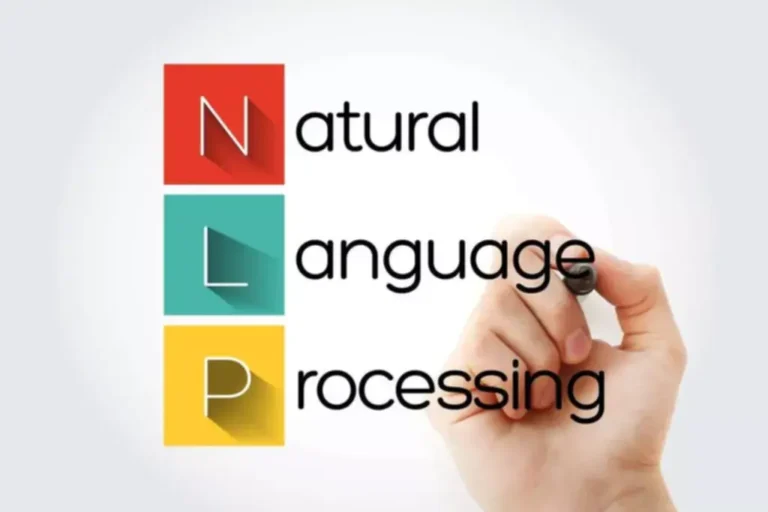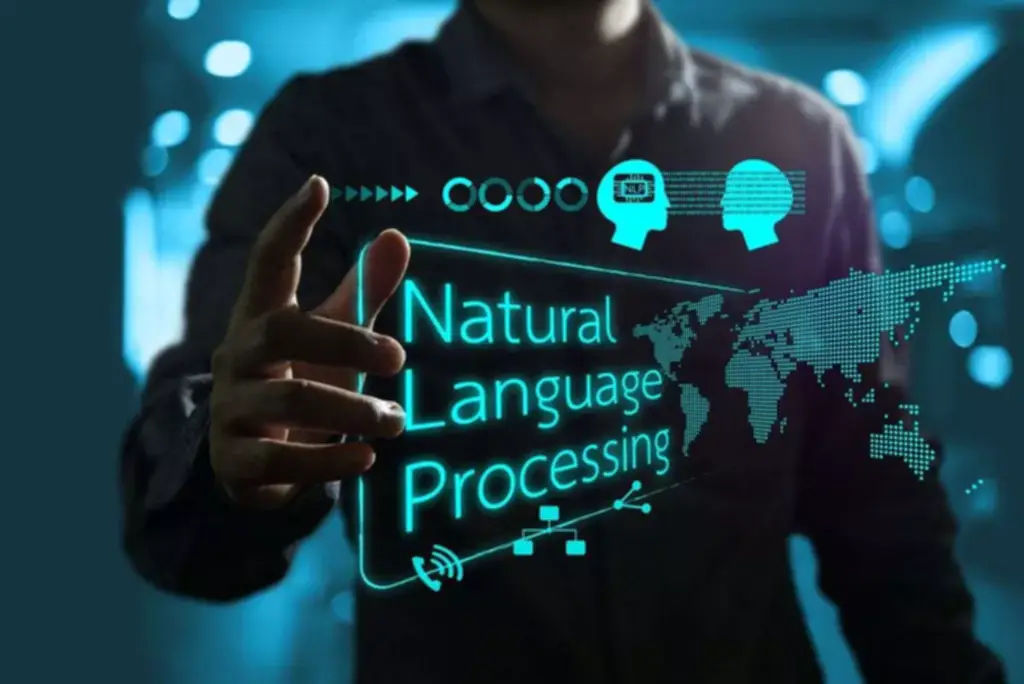Sentiment Analysis NLP

There are 500 million tweets every day and 800 million active users on Instagram monthly; about 90 percent of such auditory are younger than 35. Visitors write 2.8 million Reddit comments per day, and 68% of Americans regularly use Facebook. A considerable amount of information occurs every second, and it becomes difficult to extract valuable ideas from this chaos. You can use sentiment analysis to determine feelings and emotions expressed in comments.
What is sentiment analysis?
Sentiment analysis NLP is a machine learning system that allows the identification of feelings and emotions expressed in texts, audio, and video files. A sentiment analysis system successfully combines natural language processing (NLP) and machine learning methods to assign adequate sentiment scores to sentences’ entities, topics, and categories.
Analysts of large companies use sentiment analysis to assess public opinion, conduct detailed marketing research, study the reputation of the brand and products, and analyze customer experience. Data analytics organizations prefer to add third-party sentiment analysis APIs into their quality and service management, social media monitoring, or workforce analytics systems to provide actionable data to their customers.
This article will explain how sentiment analysis works and describe the role of machine learning and natural language processing in sentimental analysis. Finally, we will talk about where such algorithms are used today.

We are confident that we have what it takes to help you get your platform from the idea throughout design and development phases, all the way to successful deployment in a production environment!
The definition of a sentiment library
An efficient sentiment analysis system must rely on an actual sentiment library to detect sentiment or score in words and sentences.
Sentiment libraries contain collections of dictionaries, including adjectives and phrases, which are pre-scored manually. It is essential to carry out the assessment as carefully as possible so that the sentiment analysis system may distinguish between the words like «bad» and «terrible», giving «terrible» a more negative connotation. Moreover, if we are dealing with a multilingual mechanism of sentiment analysis, there must be libraries for each supported language.
Developers may change and personalize each library as needed: adding or removing phrases/words and new score settings. After preparing the dictionaries, you need to add several rules to the software so that the computer correctly determines the sentiment expressed towards a specific topic, considering its proximity to other positive or negative words. For example, «very upset» has more negative sentiment than the «slightly upset» statement.
Part of Speech tagging in sentiment analysis
There is a need to break down sentences into parts to analyze them correctly. Such a procedure involves executing some sub-procedures, including POS tags. Part of Speech tagging identifies the main components of a text, including verbs, nouns, adjectives, and adverbs. Many languages have clear word creation rules; these can be added to the software to develop a basic POS tagger.
An effective analysis system relies on accurate natural language understanding software to get correct POS tag results, which are critical to identifying different combinations of phrases.
In English, a combination of a number, a proper name, and the word «street» means a postal address. A string of characters interrupted by an @ sign ends with a particle «.com», «.net» is an email address. Even human names can be generalized as two- or three-word patterns of nouns.
Sentiment analysis features
The main elements in an emotion checking tool are powered by NLP in sentiment analysis, including processing speed, a wide choice of languages, and named entity recognition flexibility in deployment, which is not a complete list. Below, we will talk about the functions of sentiment analysis:
- High speed and significant scales. A sentiment analysis tool may process about 500 commentaries every second and should be able to handle millions of API calls daily. It must be powerful to maintain a given speed, even at scale.
- Accuracy. Sentiment analysis platforms evaluate expressed sentiment with a high degree of accuracy, regardless of language or source of information.
- Aspect-based analysis. The presence of NLP in sentiment analysis allows the user to obtain the most accurate data due to aspect-based sentiment analysis. Such a mechanism can inform you about all the advantages and disadvantages of the product.
- Multilingualism. This feature allows for the extraction of sentiment analysis of essential data, regardless of language. Real multilingualism guarantees maximum accuracy of NLP sentiment analysis to cover different markets.
- Social networks. Such a function collects all the necessary information by analyzing sentiment in social networks. NLP activity in sentiment analysis ensures that the system understands slang, hashtags, and emojis.
- Multimedia. Video content research allows the engine to identify a brand logo in a video or even in a moving vehicle in the background.
- Entity Extraction. NLP tools in sentiment analysis define and classify different entities, including people, places, businesses, brands, and other important details mentioned in your database. The algorithm recognizes objects differently, considering aliases, abbreviations, and common spelling errors.
- Dashboard and reporting. The visualization panel gives you a holistic view of your data for strategic decision-making. Any company can quickly obtain data on current performance and future trends using graphs, charts, and tables to present the results of the sentimental analysis.
- Customization. You may increase the accuracy and relevance of the output information through customization since NLP technologies in sentiment analysis process vocabulary, product names, key objects, and perform other semantic operations.
- Flexible deployment. Such an option allows you to choose between an on-premise solution and a cloud-based one. The difference is that an on-premise solution is more reliable and secure, and cloud software does not require constant support while updating the system.
It’s not a complete list of features of a sentiment analysis solution.

The classification of sentiment analysis
People can express a vast range of emotions: joy or sadness, interest or lack of interest, positive or negative. There are different models of sentiment analysis that allow you to capture this variety of emotions:
- Fine-grained. Such a system helps to derive polarity precision. The user can perform sentiment analysis through such polarity categories: very positive, positive, neutral, negative, or very negative. Fine-grained sentiment analysis allows us to study reviews and build ratings. You may use different rating scales, e.g., 1 to 5, where 1 means very negative, and 5 means very positive. Another option is to create a 10-point scale, where the result 1-2 may be considered very negative, and a score 9-10 is very positive.
- Aspect-based. The fine-grained analysis explores the overall polarity of a company’s customer reviews, while aspect-based analysis is more in-depth. It helps to identify the main aspects in question. Imagine that your company makes smartphones, and you get a customer review complaining about unsatisfactory camera performance in artificial lighting conditions. Aspect-based analysis determines that the user has given a negative rating regarding the camera.
- Emotion detection. It’s evident from the title that emotion detection allows detecting emotions such as anger, aggression, sadness, frustration, happiness, doubt, and panic. Emotion detection systems usually rely on dictionaries – these are sets of words that convey certain emotions. Separate advanced classifiers use robust machine learning algorithms. We recommend using machine learning instead of dictionaries because people can express feelings in thousands of ways. Let’s look at the situation with the example of the phrase «This product is about to kill me». Such a sentence can mean fear and horror and have a positive connotation. The dictionary associates the word “kill” with anxiety, which will lead to a distortion of emotions.
- Intent Analysis. Correctly identifying customer intent saves a company time, money, and effort. Often companies compete for customers who do not plan to make purchases shortly. A thorough intent analysis will help to solve this problem. Intent research helps to understand whether the site visitor will make a purchase or if he is browsing the pages. If the client is ready to make a deal, you can track and target him with your advertisements. When a person is only considering a purchase, you can not waste time and effort showing ads.
Different types of sentiment analysis are helpful in various situations.
How does sentiment analysis work?
Sentiment analysis NLP appeared thanks to the tools of natural language processing and machine learning systems: it helps to identify the emotional tone behind online conversations. Various algorithms developers add to sentiment analysis models; it depends on how much data you need to research and how accurate the system needs to be. Consider the most popular options:
- Rule-Based. In such algorithms, the system automatically tags input data; it relies on predefined rules to comprehend the polarity of people’s sentiments. NLP methods enforce these rules, such as stemming, tokenization, part-of-speech tagging, and parsing. Specialists make separate lists for different feelings; negative words are «bad», «terrible», «worst», and positive ones «good», «beautiful», «perfect». Next, the system analyzes the input information to find polarized words. Then different segments are processed, such as: «positive», «negative», or «neutral», considering the highest number of polarized words associated with a particular category.
- Automatic. Automatic sentiment analysis utilizes machine learning techniques to mark textual information with different tones. A classification machine learning model allows understanding whether the input data falls into a particular set of groups of sentiments, like positive, negative, or neutral. Initially, the input information enters the model, where entities are extracted and associated with the tag. The system uses text vectorization, a bag of words, word embeddings, and word frequencies to extract entities. Then the data is classified by different sentiments to get an efficient model.
- Hybrid. A hybrid sentiment system combines elements of rule-based and automatic sentiment analysis models. A successful combination of machine learning tools and natural language processing creates a more accurate and complete sentiment algorithm.
Each system has its strengths and weaknesses.
The main stages of sentiment analysis of video files
A powerful machine learning engine uses videos to collect and analyze consumer data from YouTube, TikTok, corporate storage of video files, etc. Let’s break down the process of sentiment analysis through video processing on stages:
- Audio-to-text transcription. Speech-to-text transcription relies on neural networks to transform audio and video files into text. Such a function allows analyzing data not only from comments and podcasts but also from videos.
- Adding subtitles. The algorithm splits the video into separate frames; the text appears in the picture and is easier to recognize and extract.
- Image recognition. The engine detects background images and notices brands, people, logos, and other essential objects.
- Text analysis. The text analytics API is responsible for processing text from files and comments, including identifying emojis and hashtags.
- Sentiment and semantic analysis help extract keywords and topics and assign them scores on a sentiment scale.
- Visualization. All information about sentiment appears in a customer sentiment dashboard; this data can be discussed, shared, and used to develop marketing tactics.
Nowadays, it’s one of the most popular options for sentimental analysis.
Combination of ML and NLP for Sentiment Analysis
The main goal of machine learning (ML) technologies in sentiment analysis is to automate the text analytics options necessary for sentiment analysis (segmentation, POS-tagging, entity extraction, etc.).
When specialists teach a machine learning model by providing it with many text files containing pre-tagged examples, it will be able to perform sentiment analysis NLP automatically in the future. Thanks to supervised and unsupervised machine learning tools, such as neural networks and deep learning, identification is possible.
Machine learning also allows analysts to solve context-dependent issues related to natural language development. For example, if we speak about the word «burned-out», it can have several meanings. However, considering teaching ways such as providing a machine learning algorithm with thousands of pre-tagged examples, the ML system may distinguish «burned-out» in the context of the fire and the strenuous working day.
Some hybrid sentiment analysis systems combine elements of machine learning and natural language processing (NLP) to achieve maximum accuracy. It’s essential to understand the difference between NLP and ML. NLP-based sentiment analysis is a helpful tool to create a foundation for POS-tagging, while machine learning systems solve complex natural language processing problems, including comprehending double-meanings via automated teaching.
A successful combination of ML and NLP techniques covers the whole procedure of text analytics for sentiment identification from low-level segmentation up to semantic differentiation, considering the context of word appearance.
Why sentiment analysis is so important
People on the Internet express their feelings more openly than in real life; therefore, sentiment analysis is crucial for identifying and understanding sentiments in different databases. Automatic analysis of user feedback allows the company to understand what customers like and what disappoints them to tailor products to the target audience’s needs.
The overall advantages of sentiment analysis NLP include:
- The ability to sort information to scale. Imagine how difficult it is to manually sort through hundreds of thousands of tweets, tech support conversations, and surveys. Companies have to deal with too much data to handle manually. Sentiment analysis enables efficient work with a large amount of unstructured information.
- Real-Time Analysis. Sentiment analysis can detect fundamental problems in real-time, for example, flaws in a social media PR campaign. NLP tools allow us to identify such negative moments and take immediate action.
- Training chatbots. The benefits of sentiment analysis apply not only to employees but also to company chatbots. It can teach virtual assistants to recognize and respond to customer moods.
- Identifying primary emotional triggers. Emotional triggers influence people’s decisions. Using sentiment analysis, the organization can determine which messages act as emotional triggers that change people’s intentions. E.g., many customers report that the phrase «please wait» irritates them, while using emoticons, on the contrary, has a positive effect on the dialogue.
The possibilities of using sentiment analysis are endless. Below, we’ll look at how sentiment analysis can benefit different businesses.

Applications of NLP Powered Sentiment Analysis
It will hardly surprise anyone to learn that the sentiment analyzer is now prevalent everywhere, from the sphere of sales to healthcare. We have compiled a list of the most critical sentiment analysis applications that have become an essential element of the business environment:
- Patient Voice. Patient experience data gives hospitals, pharmaceutical companies, and health insurance organizations essential information to improve patient care.
- Social Media Listening. Sentiment analysis in social networks helps the company monitor the brand’s reputation and work with reviews and mentions in different profiles.
- Business Intelligence. NLP methods for sentiment analysis allow the company to get a large amount of business intelligence; they help boost the effectiveness of the advertising campaign and sales and increase the overall profitability.
You can find different types of sentiment analysis in brand insights, business reputation management, and competitive research.
Challenges involved in Sentiment Analysis
The combination of NLP and sentiment analysis give companies insight into improving product quality, pricing, marketplace location, customer experience, and employee satisfaction. However, when using sentiment analysis in practice, organizations face various challenges. Analysts have created different approaches to solve them. Let’s talk about such problems in more detail:
- Sarcasm. It allows expressing negative emotions through overt language and allusions to certain things; this can cause the system to think the feedback is positive when it is negative. It’s crucial to train sentiment analysis tools to work with the context of phrases to solve such a challenge and provide an accurate result.
- Negation. They often stump a machine learning model, but the NLP elements of sentiment analysis help the platform understand that double negatives give positive meaning to a sentence.
- Polarity. Words with high polarities, such as «happiness» or «grief» are easy to comprehend, but the system sometimes skips a phrase like «it’s not so bad», thus lowering the sentiment score. NLP helps make the analysis more accurate because it quickly determines the middle polar phrases.
- Emojis. Social media users like to use emojis. Most sentiment analysis platforms remove them from comments during text mining. If you choose an engine with an emotion analyzer to decode smileys, this problem doesn’t arise.
- Multilingual information. NLP algorithms are developed for each language so that sentiment analysis does not require translating the data to perceive it. We recommend choosing algorithms that read languages natively and have particular named entity recognition models for various languages.
Some difficulties also arise when dealing with idioms, comparative sentences, employee bias, etc.
Examples of sentiment analysis
There are two actual use cases of sentiment analysis for customer satisfaction:
- Banking. The South African bank wanted to improve the quality of service and make sure that competitors did not usurp its market share. The company turned to experts to make an intellectual sentiment analysis, which could process two million texts from social networks and draw conclusions. NLP was able to identify what challenges customers face and how the bank can address them. The introduction of new systems allowed the bank to increase its customer base and reduce the dropout rate.
- Call Centers. European mobile operator has decided to monitor and analyze all interactions of customer service representatives (CSRs) to understand customer pain points. Robust sentiment analysis software analyzed each saved audio file for client voice analytics. The data was broken down into more minor details; this eventually allowed the company to send text messages to customers apologizing for the inconvenience and offering discounts and other great deals.
Sentiment analysis NLP is still a developing sphere of artificial intelligence. Due to how people communicate, there is much room for improvement in this area. However, techniques that are used in sentiment analysis seem promising and valuable for different types of businesses.
Top Articles
How To Choose AI Software For Your Business?
I am here to help you!
Explore the possibility to hire a dedicated R&D team that helps your company to scale product development.






